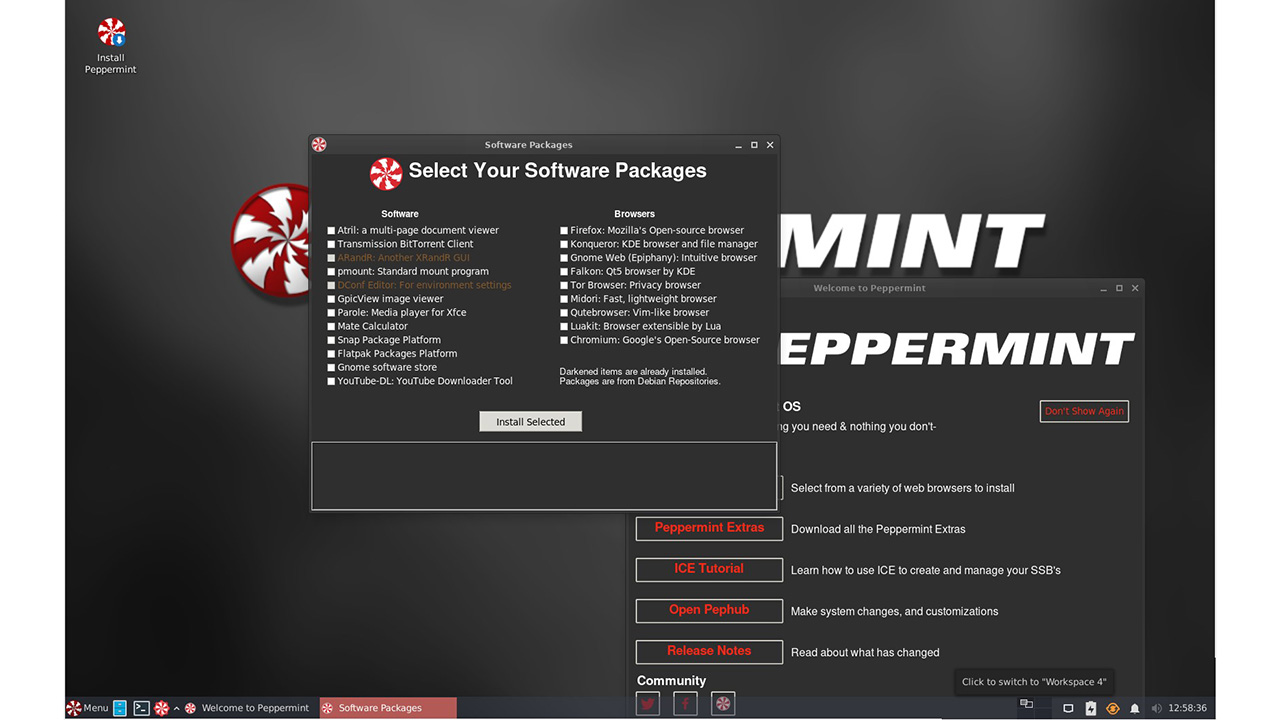Peppermint OS 11 Unveils New Bullseye-Based Distro
It’s taken them three years, but Peppermint OS, a lightweight Linux distro for low-powered computers, has a new release - Peppermint OS 11 - and it’s a big change from its predecessor.




While Peppermint OS 10 was based on Ubuntu, version 11 makes the jump to 64-bit Debian Bullseye, the 5.10 LTS kernel, and the lightweight Xfce 4.16 default desktop environment. This means you now get Calameres as the graphical installer instead of Ubuntu’s Ubiquity, and sees changes in the software selection too, with Nemo replacing Thunar as the default file manager, and new Welcome To Peppermint and Peppermint Hub apps that let you customise the OS and access its settings.
There's no web browser installed by default, but with Firefox ESR, Konquerer, Epiphany and more available from the Welcome app, that shouldn’t take too long to sort out. Of course being a Debian system you are free to install whatever web browser that you wish via the APT package manager. There are also plenty of themes, icon packs and wallpapers available to download from the Peppermint Extras section.
These help the OS greatly, as it has an austere look about it to begin with. Default wallpapers are plain, only one even sporting the Peppermint logo, but that’s only to be expected from a minimalist, lightweight OS with an ethos of “everything you need, nothing you don’t”. Peppermint's minimum specs state 1GB of RAM and any x86 processor, though 4GB of RAM is preferred. It can be installed on 12-year-old laptops, according to a video linked from the official site.
Other new features include having the Num Lock key enabled by default, which has been welcomed by commenters on the site, but may lead to some laptop keyboards behaving oddly. Privacy tools adblocker and Hblock are installable via Terminal, and should prevent ads from being seen across the whole system by modifying the /etc/hosts file so it contains the details of over 100,000 ad-serving domains (though remember, adverts are how many sites make money and pay their contributors).
Bullseye made a splash when it was used as the basis of the Raspberry Pi OS late last year, but we’ve found using the Peppermint OS live CD via a virtual machine, to be straightforward and painless, even with the minimum amount of RAM. We were able to install apps and browse the Internet with ease. Updating is achieved via a simple shortcut in the system tray, and the system seems fast and responsive.
If you've got some old kit laying around, then perhaps adding a little "pep" with Peppermint OS is what these machines need.
Get Tom's Hardware's best news and in-depth reviews, straight to your inbox.

Ian Evenden is a UK-based news writer for Tom’s Hardware US. He’ll write about anything, but stories about Raspberry Pi and DIY robots seem to find their way to him.